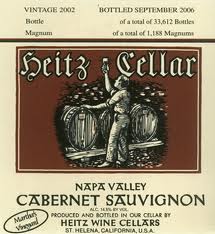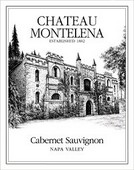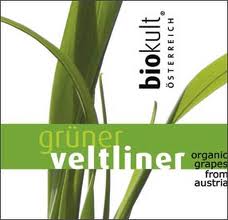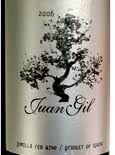|
|
 |
|
January 25, 2011
(Robert Whitley's Creators Syndicate Wine Talk column for this week.)
This week you will find a wine in my Creators Syndicate Wine Talk tasting notes that retails to the north of $100 a bottle. A couple of weeks back I also recommended the new ‘Insignia’ from Napa’s Joseph Phelps Vineyards – at a cool $200 a pop. Rest assured, when I visit my favorite wine merchant I don’t dwell exclusively in the high-rent district. I do, however, enjoy the occasional visit.
 Many readers ask why some of these wines cost so much. There is no simple answer. If I laid it at the feet of supply and demand, an astute observer of the wine scene could point immediately to any number of wines that are both obscure and pricey. I, too, roll my eyes whenever I come across a wine I’ve barely heard of that’s priced in the $100 range. Many readers ask why some of these wines cost so much. There is no simple answer. If I laid it at the feet of supply and demand, an astute observer of the wine scene could point immediately to any number of wines that are both obscure and pricey. I, too, roll my eyes whenever I come across a wine I’ve barely heard of that’s priced in the $100 range.
You are absolutely right if you believe, as I do, that outstanding wines do not have to come with an outlandish price tag. Still, there are expensive wines that deserve our attention. They deserve our attention because of their rich history. They deserve our attention because their track record is impeccable. They deserve our attention because they’ve established a position of prominence and stature in our wine culture.
I do not drink wines of this ilk every day. Not even every month. But I like the fact that I either have a few such bottles in my cellar or can lay my hands on a bottle or two if an occasion arises that demands a memorable wine. Most of our iconic wines in this country are Cabernet Sauvignon-based reds from the Napa Valley.
For purposes of this discussion, let’s leave out the ridiculously expensive so-called “cult wines” such as Screaming Eagle, Harlan and others of that genre. Those wines can fetch upwards of $1000 per bottle and are hot commodities on the auction circuit. This conversation will be limited to iconic wines people actually drink.
When I began to assemble a list of the exceptional wines that I would be willing to spring for at $100 or more a bottle, I assumed it would be a short list. It is actually quite long, so I’ve whittled it to my Top Ten. Bear in mind that these wines are all classics that were once relatively inexpensive, increasing in price only as their reputations grew.
 1. Heitz Martha’s Vineyard Cabernet Sauvignon was among the Napa Valley’s earliest stars. Wine enthusiasts were appalled when the 1974 vintage was introduced at the scandalous price of $15 a bottle. That was in 1976. 1. Heitz Martha’s Vineyard Cabernet Sauvignon was among the Napa Valley’s earliest stars. Wine enthusiasts were appalled when the 1974 vintage was introduced at the scandalous price of $15 a bottle. That was in 1976.
2. Stag’s Leap Wine Cellars Cask 23 Cabernet Sauvignon exemplified owner Warren Winiarski’s description of Stag’s Leap (the region) Cab being an iron fist in a velvet glove.
3. Joseph Phelps Vineyards Insigia was the Napa Valley’s first proprietary Bordeaux-style Meritage red blend. And its best.
4. Spottswoode Estate Cabernet Sauvignon helped put the legendary winemaker Tony Soter on the map.
5. Robert Mondavi Reserve Cabernet Sauvignon is the flagship wine of the Napa Valley’s flagship winery.
6. Opus One was the collaboration between Robert Mondavi and Baron Philippe de Rothschild of Chateau Mouton. It was the perfect marriage of Bordeaux and the Napa Valley.
7. Beaulieu Vineyards Georges de Latour Private Reserve Cabernet Sauvignon was for decades the Napa Valley’s benchmark Cabernet Sauvignon.
8. Silver Oak Wine Cellars Cabernet Sauvignon emulated Beaulieu’s embrace of American oak cooperage and went against all conventional wisdom by aging its Cabs five years before release.
 9. Chateau Montelena Cabernet Sauvignon has been devoted to uncompromising winemaking since its inception, and to this day is among the most cellar-worthy Napa Valley Cabs. 9. Chateau Montelena Cabernet Sauvignon has been devoted to uncompromising winemaking since its inception, and to this day is among the most cellar-worthy Napa Valley Cabs.
10. Caymus Special Selection Cabernet Sauvignon has long been on everyone’s short list of Cabs that best demonstrate the concentration and complexity that can be achieved by Cabernet Sauvignon in the Napa Valley.
I’ve omitted a number of my favorite producers such as Corison, Far Niente, Nickel & Nickel, Cakebread, Beringer, Diamond Creek, Grgich and Duckhorn, but only because of space constraints. My simple point is that there is a place for these super premium wines. I would even argue that compared to the “cult wines”, these Napa Valley icons are every bit as good while substantially less expensive.
Isn’t that the very definition of value?
Posted by Robert Whitley at 11:32 AM
|
|
January 19, 2011
(Robert Whitley's Creators Syndicate column this week.)
I caught up this week with Rick Sayre, the longtime winemaker at Rodney Strong Vineyards, the venerable winery that almost single-handedly introduced the Chardonnay grape to Sonoma County. At least that's how it was in the telling by the late Rod Strong, who had been a veteran of vaudeville and remained a flamboyant character until the very end.
 Sayre's tenure speaks volumes about the winery and its footprint in the California wine industry. He's been there 31 years, through good times and bad. His legacy, to the extent the modest and soft-spoken Sayre might consider his legacy, would be consistency. Sayre's tenure speaks volumes about the winery and its footprint in the California wine industry. He's been there 31 years, through good times and bad. His legacy, to the extent the modest and soft-spoken Sayre might consider his legacy, would be consistency.
He was there on the front lines when Tom Klein purchased the winery in 1989 and infused it with much-needed cash to purchase better equipment and choice vineyards in the Russian River and Alexander Valleys.
"I've always said you can have all the tricks in your bag, but first you have to start with good grapes," Sayre said over lunch at a San Diego restaurant.
He is still there after more than two decades of growth and a trail of stellar wines that few could have imagined a quarter-century ago. Prior to the arrival of the Klein family, RSV's claim to fame had been its ubiquitous Sonoma County Chardonnay, an inexpensive Chardonnay that was among those that had been dubbed "fighting varietals" at a time when the very existence of "varietal" wines in California was a novel concept.
They were called "fighting" because of the low price point, which was intended to make them competitive with Jess Jackson's new and wildly popular (at the time) Kendall-Jackson Vintner's Reserve Chardonnay.
.jpg) Rodney Strong is still a major player in the "value" category, producing more than 700,000 cases annually of dependable Sonoma County Cabernet Sauvignon, Chardonnay, Zinfandel, Merlot and assorted other wines that retail between $13 and $17. That's what pays the bills and makes the more upscale Rodney Strong wines possible. The upscale wines would be the other face of Rodney Strong Vineyards, the side that is too often overlooked. Rodney Strong is still a major player in the "value" category, producing more than 700,000 cases annually of dependable Sonoma County Cabernet Sauvignon, Chardonnay, Zinfandel, Merlot and assorted other wines that retail between $13 and $17. That's what pays the bills and makes the more upscale Rodney Strong wines possible. The upscale wines would be the other face of Rodney Strong Vineyards, the side that is too often overlooked.
I would argue that even these more expensive Rodney Strong wines represent value within the context of quality and the going rate for the competition. At the top of the heap is the sensuous Symmetry (the winery also has a line of highly stylized proprietary wines that won't be discussed here) red Bordeaux blend.
I still have a number of bottles of Symmetry from the 1990s in my cellar, and they never disappoint when I open one. The current vintage is 2007, which was a cool year in Sonoma County. It retails for $55 and exhibits layered black and red fruit aromas, notes of mocha and spice, and beautifully integrated tannins, which are smooth and supple and lend a seductive texture on the palate. The stated alcohol is a bit high at 15.1 percent, though there is no noticeable heat on the finish. Other wines of its ilk would start at about $75 a bottle.
But the real bargain in Rodney Strong reds is the Russian River Valley Pinot Noir at $20. I tasted the 2009, and the first thing that impressed me was the gorgeous nose, a complex array of floral, earth and berry aromas.
Although light crimson in color, it didn't lack for flavor or texture on the palate, and the finish was long and inviting. As in "have another glass." Pinot of this quality usually comes from the $35 range.
.jpg) I also evaluated three whites: 2008 Reserve Chardonnay ($35), 2009 Chalk Hill Estate Chardonnay ($20) and 2009 Charlotte's Home Sauvignon Blanc ($13.50). I also evaluated three whites: 2008 Reserve Chardonnay ($35), 2009 Chalk Hill Estate Chardonnay ($20) and 2009 Charlotte's Home Sauvignon Blanc ($13.50).
The Reserve Chard is voluptuous and rich, with a spicy note of wood that complements the ripe pear flavor profile. There is a subtle hint of lemon creme, and bright acidity that knifes through the oily texture of this wine. It's utterly delicious.
The Chalk Hill Chardonnay is leaner with more apparent acidity, but it also has lovely pear, apple and citrus aromas.
The Charlotte's Home Sauvignon, which has long been one of my favorites from Rodney Strong, is a steal at the price. Grapes are sourced from the cool Russian River Valley and the warm Alexander Valley, contributing to the complex palate of citrus, gooseberry and tropical fruit aromas.
Posted by Robert Whitley at 10:24 AM
|
|
January 14, 2011
So there I am at lunch with winemaker Rick Sayre of Rodney Strong Vineyards and I'm going on about another winery's flagship wine, a reserve Cabernet Sauvignon, coming in at 15-plus percent alcohol by volume on the label.
 Rick, whom I've known for the better part of two decades, was quiet on the topic. After lunch I understood the silence. That's when I went over the tech sheets describing the wines he had presented and saw the 2007 Symmetry with a hefty 15.1 stated alcohol on the label. Rick, whom I've known for the better part of two decades, was quiet on the topic. After lunch I understood the silence. That's when I went over the tech sheets describing the wines he had presented and saw the 2007 Symmetry with a hefty 15.1 stated alcohol on the label.
OK, so I had my foot in my mouth and didn't even know it. That happens sometimes.
But that brings me to the larger question of whether or not these high alc bombs are a good thing for the wine industry. They often taste good and generate high scores, particularly from the Robert Parkers and James Laubes of the wine commentariat. Hell, even I would give the Symmetry a generous score even though I am chargined by the stunning rise in alcohol levels over the past 20 years.
But at one point in the conversation I told Rick how much I am enjoying some of the Symmetry in my cellar from the 1990s. Those wines were delicious then and they're even better now. And their ABV levels don't approach those we see today.
So why? I ask myself. Is it only in pursuit of the high scores that we see 15 percent ABV on a table wine? I'm not even saying that is a bad thing. I will concede that these riper wines are every bit as yummy, and some would say moreso, than the wines of only a few years back.
But I know this: If you drink a half bottle or more with dinner, you're going to feel it. Maybe not the heat, which the modern wines cleverly mask, but certainly the fuzziness of dulled senses.
Maybe that's OK. But I think I still prefer a dinner wine that delivers balanced flavor, complexity and structure without the headache.
Posted by Robert Whitley at 2:48 PM
|
|
January 4, 2011
(Robert Whitley's Creators Syndicate 'Wine Talk' column for this week.)
Unlike many in the wine industry, I look back at 2010 with fond memories. I realize for wineries this past year was bittersweet. Prices seemed to stabilize, but there was nothing that resembled a rally in the direction of the previous highs. To be sure, 2010 was a buyer's market from start to finish.
 The sluggish economy forced all who dealt in wine, particularly restaurants, to rethink their strategy. The most significant trend I witnessed in 2010 was the embrace of diversity and lower-cost wines by the restaurant trade, even in tony establishments. The sluggish economy forced all who dealt in wine, particularly restaurants, to rethink their strategy. The most significant trend I witnessed in 2010 was the embrace of diversity and lower-cost wines by the restaurant trade, even in tony establishments.
It almost makes me think the days of boring wine lists foisted on restaurants by pushy distributors are over. Restaurateurs seemed to have a collective epiphany in 2010, finally coming to realize the dining-out segment of the population is more discriminating and curious than ever on the topic of wine.
Niche wines, such as Gruner Veltliner (a crisp white from Austria) or Jumilla (a luscious red from southeastern Spain), have fans throughout the United States and have made their way onto restaurant wine lists far and wide. So, too, has Viognier from Virginia, dry Riesling from New York's Finger Lakes, and Malbec from Argentina.
If it's well made and reasonably priced, the modern wine enthusiast will give it a go. This willingness to experiment seems to cross all the usual demographic boundaries. I know a doctor, for example, who once only drank expensive Bordeaux and Burgundy or A-list Napa Valley Cabernet Sauvignon. Today, he is mad about Malbec, a wine he only discovered after the recession caused him to re-evaluate what he had been spending on wine.
 Restaurants have also caught the spirit of bringing your own bottle. Many have reduced or eliminated (at least on designated nights) corkage fees, encouraging diners to dine out with a wine from their own private stock rather than stay at home to enjoy that experience. Restaurants have also caught the spirit of bringing your own bottle. Many have reduced or eliminated (at least on designated nights) corkage fees, encouraging diners to dine out with a wine from their own private stock rather than stay at home to enjoy that experience.
I don't pretend to understand the economics of running a top restaurant, but I'm quite certain a full restaurant with a reduced corkage fee pencils out better on the P&L than an empty restaurant with a hefty corkage.
Another trend of 2010 was the rebirth of Chardonnay, particularly California Chardonnay. The emerging style emphasizes balance and refinement at the expense of ripeness and intensity. The result is subtler Chardonnay that is slightly lower in alcohol and more expressive of its terroir, or place of origin. Good examples of this can be found from William Hill, Fogdog, Bouchaine, Nickel & Nickel and scores of others.
 And finally, 2010 saw the emergence of Washington, led by Chateau Ste. Michelle, as a key player on the U.S. stage. The growing popularity of Riesling is one component of the rise of Washington wine, but it's also the realization that Washington has tremendous potential for Syrah, Merlot and Sauvignon Blanc — even Chardonnay. And finally, 2010 saw the emergence of Washington, led by Chateau Ste. Michelle, as a key player on the U.S. stage. The growing popularity of Riesling is one component of the rise of Washington wine, but it's also the realization that Washington has tremendous potential for Syrah, Merlot and Sauvignon Blanc — even Chardonnay.
Because Washington wines are relatively cheap compared to the more established vineyards of California, they will serve as a restraint on prices, or a rapid return to the days of placing a hefty price tag on a new, untried, untested wine just because you could.
For the consumer, I would say 2010 was a year of bounty and a year of discovery.
Wines came at you from all corners of the world and were better than you could have imagined. May 2011 bring us more of the same.
Email questions or comments to whitleyonwine@yahoo.com.
Posted by Robert Whitley at 10:43 AM
|
|
 |
|